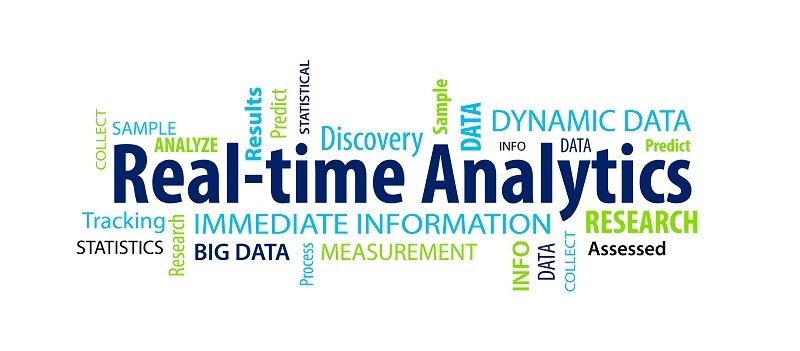Key Metrics for Real Time Analytics in Customer Experience

Every brand talks about listening to the customer. But here’s the tricky bit—listening is no longer enough. Customers want you to hear them now, not a week later when the survey results have been tallied. That’s why real time analytics has become such a powerful game changer in customer experience. Instead of waiting, businesses can react while the customer is still on the site, still in the app, or still on the call.
It sounds simple, but the shift isn’t easy. You need the right tools, the right data, and most importantly, the right metrics to know whether you’re actually making a difference.
Why Metrics Matter More Than Ever
Metrics can feel dry. Yet without them, all the dashboards and alerts in the world don’t tell you much. Numbers help you measure customer satisfaction, detect friction points, and catch trends before they spiral into costly mistakes.
In the past, companies might have waited for quarterly reports to gauge how things were going. By then, the chance to fix a broken process was long gone. Today, with real time data analytics, you don’t just know there’s a problem—you can see it as it happens and course-correct instantly. That’s the promise, and it’s why metrics are at the heart of every serious conversation about customer experience.
Real Time Analytics The Big Picture
So, what do we mean when we talk about real time analytics in customer experience? At its core, it’s about capturing signals—clicks, call transcripts, chat logs, purchase histories—and feeding them into systems that interpret and act on the data right away.
Think of it as moving from rearview mirror driving to having a live map that updates every second. Instead of reacting to what already happened, you’re navigating with live feedback. It changes the way businesses approach support, marketing, and even product design.
Key Metric 1 Customer Satisfaction Score (CSAT)
It may sound obvious, but CSAT remains one of the most telling indicators of customer happiness. Traditionally, CSAT relied on surveys sent after an interaction. Real-time systems now capture this feedback instantly, whether through a quick pop-up on a website or a post-chat rating.
The advantage is speed. If a score dips, managers can step in straight away—maybe a rep needs support, or maybe the system itself is glitching. That immediate visibility keeps small issues from snowballing.
Key Metric 2 Net Promoter Score (NPS) in Real Time
NPS has been around for years, but real-time monitoring makes it more practical. Instead of waiting weeks to see how likely customers are to recommend your brand, businesses can track responses live.
Spotting a sudden dip in NPS as it happens can help teams find the root cause. Maybe a price increase hit the wrong note. Maybe a new feature confused users. Seeing it in real time means you’re not left guessing months later.
Key Metric 3 Customer Effort Score (CES)
Customers rarely complain about smooth experiences. What frustrates them is effort. CES measures how much work customers feel they put in to solve a problem. High effort usually signals poor design, slow systems, or confusing processes.
When tracked live, CES allows businesses to quickly identify friction. For example, if too many users are abandoning a checkout flow, you can catch it in the moment instead of losing revenue all quarter.
Key Metric 4 Sentiment Analysis
This is where technology feels almost human. Sentiment analysis tools scan the tone and language of customer interactions—emails, chats, reviews—and interpret whether the emotion is positive, neutral, or negative.
With sentiment analysis software, businesses can layer emotional insights on top of traditional metrics. Instead of just knowing a customer clicked away, you know they clicked away angry. That detail changes how you respond.
In customer service, sentiment tracking in real time allows managers to step in during a heated exchange, offering extra support before the situation escalates.
Key Metric 5 Customer Sentiment Analysis
Closely linked but broader, customer sentiment analysis takes emotion tracking across multiple channels—social media, phone calls, surveys, and more. It’s not just about an isolated incident but about the bigger picture: how customers feel about your brand overall.
When integrated into real-time systems, sentiment trends highlight looming reputational risks. If negative mentions spike during a product launch, you can act before the narrative takes hold.
Do Checkout: Small Business Sales Growth: Top Strategies for Success

Key Metric 6 Response Time
Customers judge brands on speed. How long it takes for support to respond, how quickly a live chat connects, even how fast a confirmation email arrives—all matter. Tracking average response times in real time allows managers to adjust staffing, reroute queries, or trigger chatbots when queues build up.
Response time is one of those silent killers of loyalty. Customers rarely praise fast responses, but they never forget slow ones.
Key Metric 7 Resolution Rate
Getting back to customers quickly is one thing; solving their problem is another. Resolution rate measures how often an issue is fully resolved in the first interaction. Real-time tracking helps managers see if resolution rates are slipping during certain hours or with certain teams.
High resolution rates build trust. Low ones breed frustration. Watching the metric live gives you the power to shift resources where they’re needed most.
Key Metric 8 Churn Indicators
Losing customers silently is a nightmare for any business. Churn prediction models use patterns in behaviour—declining engagement, repeated complaints, cancellations in progress—to signal risk. With real time data analytics, those signals can trigger proactive outreach, like a special offer or personal check-in, before the customer disappears.
The beauty of churn metrics in real time is timing. Contacting a customer at the exact moment they’re thinking of leaving makes all the difference.
Key Metric 9 Conversion Rate
At the intersection of sales and customer experience is conversion. Tracking conversion in real time shows where customers drop off in the funnel. Maybe a button doesn’t work on mobile. Maybe a payment gateway is down. Spotting dips as they happen lets teams fix issues before they cost too much.
Conversion metrics also highlight wins—what’s working so well that it should be repeated or expanded.
Key Metric 10 Customer Lifetime Value (CLV)
CLV used to be calculated slowly, with long-term models. Real-time tracking lets businesses forecast lifetime value dynamically, adjusting for new behaviour and market conditions.
For customer experience, this matters because it identifies who your high-value customers are right now. That knowledge helps you prioritise resources where they’ll have the greatest impact.
Why Real Time Metrics Are Hard
It all sounds powerful, but measuring in real time is no small feat. Data pipelines have to be fast and secure. Systems must be integrated so that insights from one channel inform the others. And then there’s the human side—staff need training to interpret the flood of data and respond effectively.
Without careful planning, teams risk drowning in information. That’s why clarity about metrics is so important. You can’t track everything. You need to track what matters most to your goals.
Preparing for the Future
As technology advances, real-time systems will only grow more sophisticated. AI will refine sentiment analysis tools, making emotional readings more accurate. Smarter sentiment analysis software will spot sarcasm or cultural nuance that older models miss. Businesses that get ahead now will be better prepared for those advances.
At the same time, customer expectations will rise. Once people experience instant, personalised support, they won’t want to go back. That means real-time tracking will move from nice-to-have to non-negotiable.
You May Also Like: Opening a Franchise in 2025 Made Easy with Key Steps
Final Thoughts
Metrics aren’t glamorous, but they’re the foundation of meaningful customer experience. Without them, real-time dashboards are just noise. By focusing on key indicators—CSAT, NPS, CES, sentiment, churn, conversion, and beyond—businesses can respond faster, smarter, and with more empathy.
The lesson is simple: real time analytics is about much more than speed. It’s about being present for your customer in the moment they need you. And that’s what builds loyalty that lasts.
This content was created by AI
